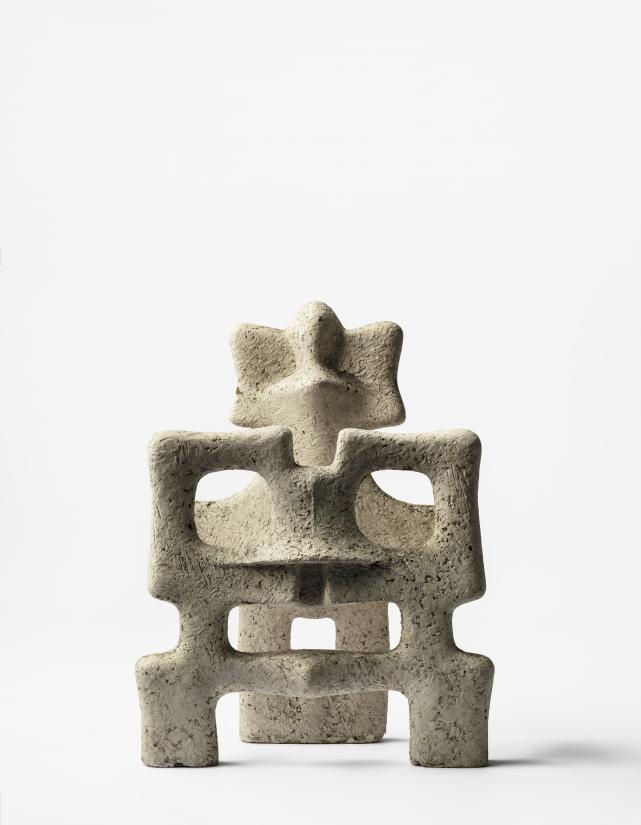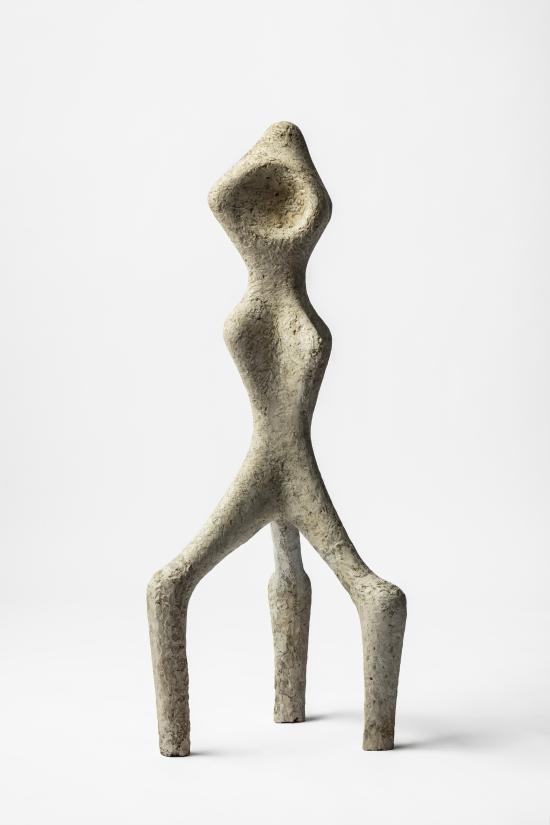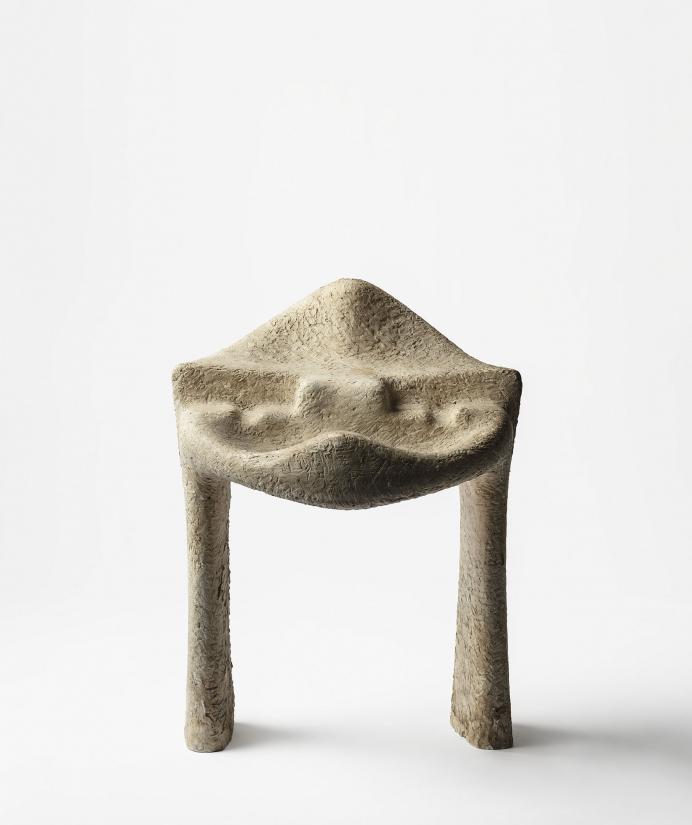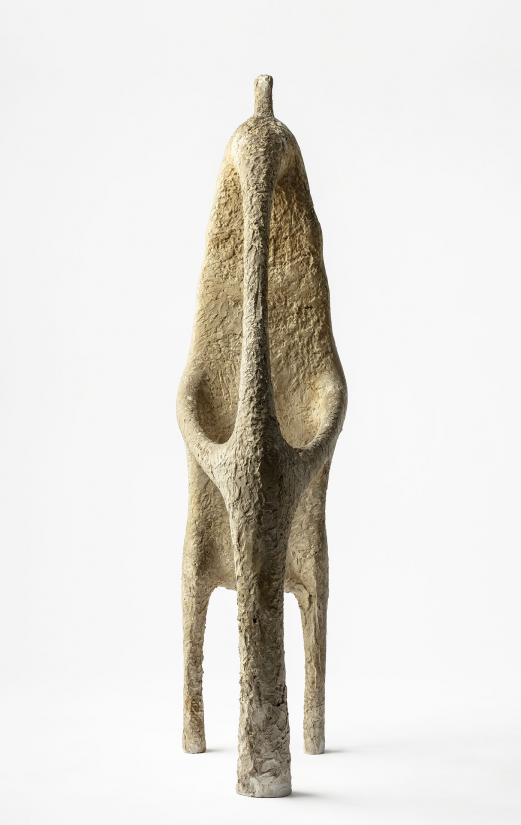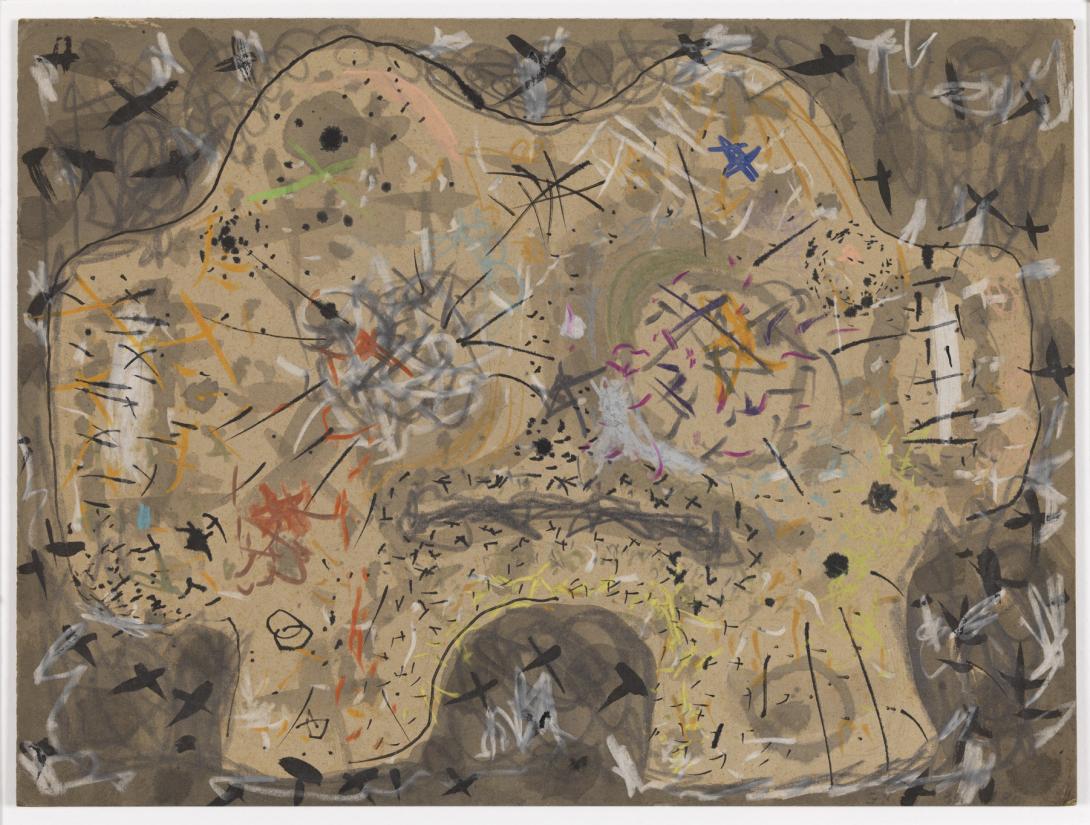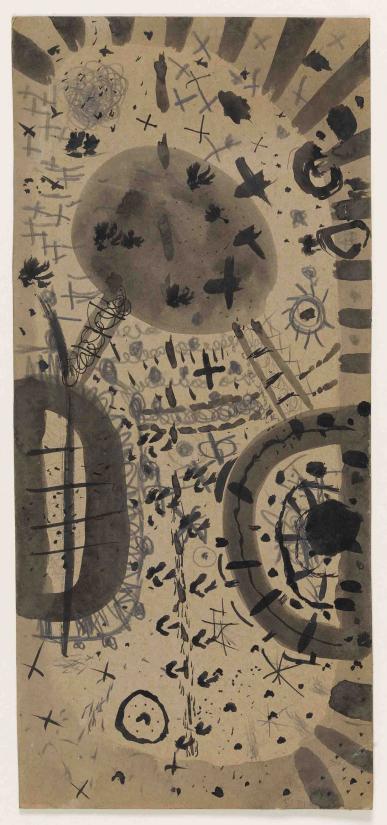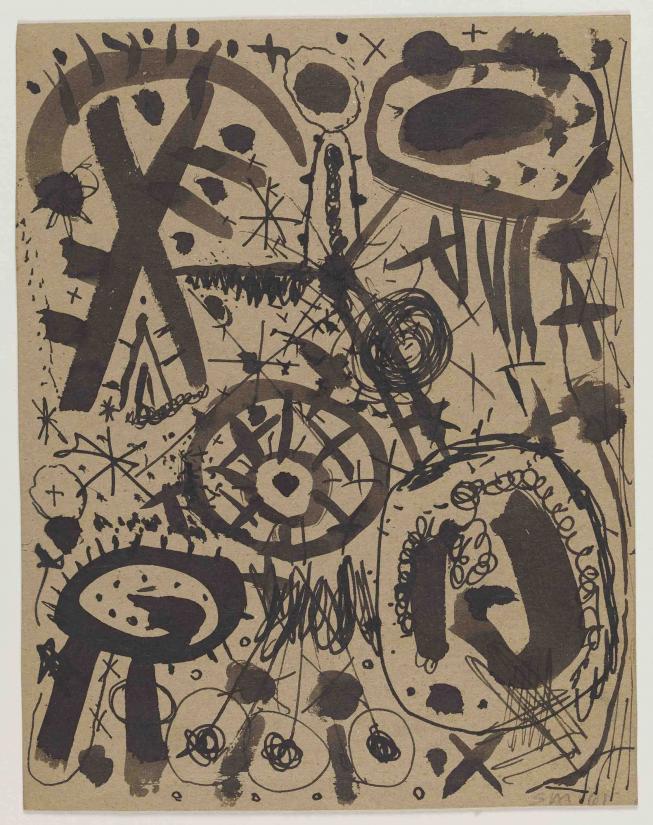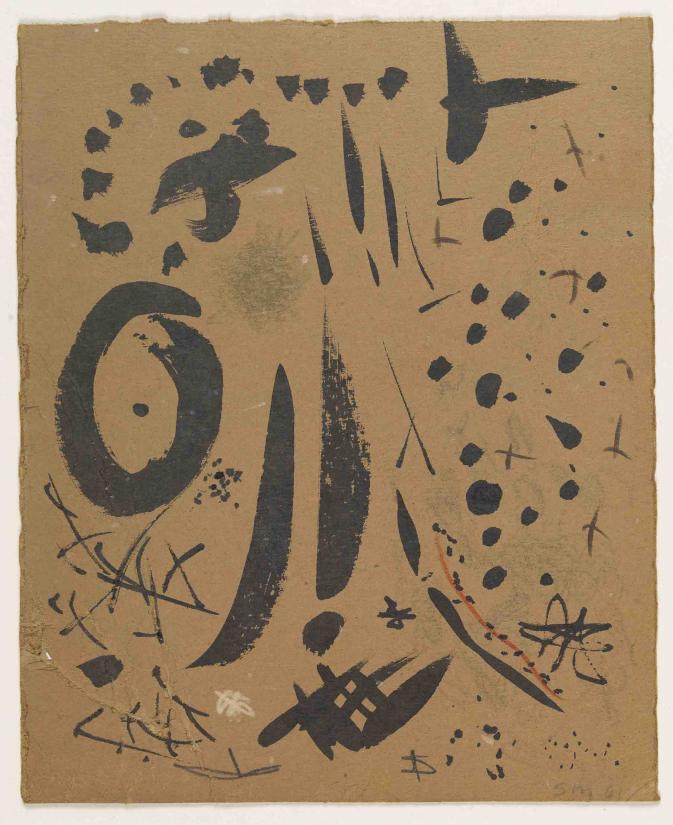Sonja Ferlov Mancoba is known mainly for her bronzes. However, an equally important part of her work consists of abstract figures and masks in plaster, which were never translated to bronze, and drawings, which played a crucial role for Ferlov Mancoba as a tool for maintaining the flow and fill out the gaps in her work with the sculptures, which was often a very lengthy process. Importantly, the drawings are not subordinate to the sculptures; rather, with their abstract brush strokes, circles, dots and x’s they constitute a significant element in their own right.
The late works
The acquisition of this group of sculptures and drawings marks an important addition to the representation of Sonja Ferlov Mancoba’s work at SMK, thus providing a much more appropriate reflection of her position in Danish art history and a more complete impression of her art. The three-legged figure Uden titel (Untitled) (1962) occupies a central place in the group. It marks the beginning of the important phase in Ferlov Mancoba’s late work where a pared-down, angular, lean expression portrays a simultaneously fragile and brutal side of human existence.
Process and materiality
Ferlov Mancoba’s primary focus was on the processual and material aspects of her works: the clay and the plaster that she handled, moulded, shaped and constructed her sculptures of. The subsequent casting process, on the other hand, was of less interest to her. The sculpture group that SMK has acquired consists of the original plaster sculptures with clear traces of the artist’s working process. As such, they convey a sense of something unfinished, something still in the making, which was an important dimension of Ferlov Mancoba’s work.
About Sonja Ferlov Mancoba
Sonja Ferlov Mancoba (1911–1984) was born in Denmark. During the 1930s she was part of the scene related to the surrealist avant-garde movement Linien (The Line). In 1936, at the age of 25 years, Ferlov Mancoba moved to Paris and set up her studio next door to Alberto Giacometti’s. Although she set out as a painter, sculpture became her primary medium. As a sculptor she developed her unique expression, which was influenced by her interest in non-Western cultures.
